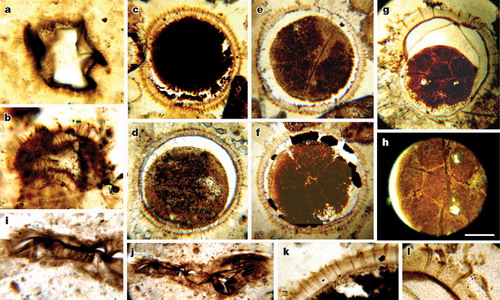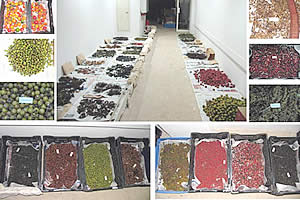|
CHINA SCIENCE AND TECHNOLOGY
NEWSLETTER
The Ministry of Science and Technology
People's Republic of China
|
|
|
N0.499 |
January 20,2008 |
|
|
|
|
|
|
|
|
IN THIS ISSUE
|
|
*Top Ten Domestic S&T Events for 2007
*China-Canada MOU for Advanced Reactor
*Tracking Tibetan Antelope’s Migration
*World First Inter-Subspecies Buffalo
* Compass Navigation for Civic Application
*Internet Connects Great Wall Station
|
Top Ten Domestic S&T Events for 2007
Top ten domestic S&T events for 2007, voted out by 547 academicians from both the Chinese Academy of Sciences and Chinese Academy of Engineering, were unveiled on January 20, 2008 in Beijing.
1) Successful launch of Chang’e I lunar satellite with clearly defined moon pictures

At 1805 October 24, 2007, China successfully blasted off a lunar satellite (Chang’e I) aboard a CZIIIA launch vehicle, from the Xi’chang Satellite Launch Center. On November 7, the lunar satellite entered an orbit 200 km from the moon, collecting lunar data in the 127-minute work orbit. It has sent back to the ground control audio and image data from a lunar orbit that is 380,000 km from the earth. China published its first lunar image on November 26, 2007. The picture, covering a width of 280 km, and a length of 460 km, shows a well defined lunar section ranging from 83-57°E to 70-54°S. The picture allows people to see the impact pits of different sizes, shapes, structures and years. The well defined lunar picture presented to the public marks China’s successful start of its lunar probe.
2) Deep oil driller

China National Petroleum Corporation announced on November 16, 2007 that Baoji Petroleum Machinery Co. Ltd. has rolled out a proprietary deep oil driller that is able to reach a depth as much as 12,000 meters. The AC frequency conversion continental driller, the first of its kind in the world, is equipped with the state-of-the-art technologies, including a winch with a lifting capacity of 6,000 horsepower, a proprietary mud pump with a pressure of 52 Mpa, and a high pressure pump of 2,200 horsepower.
3) Major progresses in cancer treatment

A study team, led by LIANG Wei and HANG Haiying, research fellows at the Institute of Biophysics, part of the Chinese Academy of Sciences, has found a nano-drug-carrier that is able to reach cancerous cells. According to the paper published in the July 4th issue of journal National Cancer Institute, glycol–phosphatidylethanolamine(PEG-PE) can be triggered in a self-assembly procedure to form 10- to 20-nm nanoassemblies of doxorubicin and PEG-PE, when it is dissolved in water. The novel PEG-PE–based nanocarrier of doxorubicin increases cytotoxicity, and enhances antitumor activity with a reduced systemic toxicity.
In another development, a study team, headed by CHEN Yan, a research fellow at Shanghai Institute for Biological Sciences under the Chinese Academy of Sciences, has screened out a brand new Raf-1 protein, and unveiled its spatial regulation role. The finding, published in the Proceedings of the National Academy of Sciences, has allowed people to understand a new mechanism that inhibits ERK signals on a Golgi complex, and created a new technical line and target for studying the molecular mechanism of excessive multiplications of cancerous cells and associated cancer treatment.
4)Six-photon Schroedinger cat realized

Prof. PAN Jianwei, and his colleagues YANG Tao, LU Chaoyang and others at the University of Science and Technology of China have created the largest ever photonic "Schroedinger cat" state, or the six-photon "cluster" state, which could bring the physical realization of a quantum computer one step closer. The finding, registered two world records on photon entanglement and quantum computation, was published as a cover story in the journal of Nature Physics.
5) Fossilized animal of 632 million years

A research team, led by YIN Leiming, Nanjing Institute of Geology and Paleontology, part of Chinese Academy of Sciences, has landed substantive progresses in studying the embryos of early animals. Researchers also discovered the earliest fossilized dormant animals in the world. The finding was published in the journal Nature under a title of Doushantuo embryos preserved inside diapause egg cysts.
Researchers collected samples from the Doushantuo Formation, Xiaofenghe, Yichang, Hubei in south China. They obtained from some 600 thin pieces embryo-like Doushantuo fossils of large, highly ornamented organic vesicles (acritarchs). The finding provides reliable evidences for studying the earliest fossilized animals, and has advanced the debut of animals to 632 million years ago, indicating that animals started to appear at the end of the snowball, or the large ice age of the late Neoproterozoic. Comparing with the Weng’An biota, the new finding has advanced the record of the fossilized animal by 50 million years.
6) China’s first proprietary regional aircraft

ARJ21, a Chinese made regional aircraft was rolled off the assembly line on December 21, 2007. The brand new digital aircraft was the baby of eight Chinese aircraft manufacturers. The successful development of the new aircraft indicates that China has completed a full process from R&D, to large components connecting, and further to the general assembly of the regional aircraft, heralded a successful ending to the R&D part of developing regional aircraft.
With a wing length of 13m, and a room for 70-90 seats, ARJ21 is a turbofan aircraft for short and medium haul, with the strength for meeting the taking-off and landing needs of most domestic airports, especially the one in the west, and a more spacious and comfortable stay, compared with its overseas counterparts.
7) Largest fossilized birdlike dinosaur found

The Institute of Vertebrate Paleontology and Paleoanthropology, part of the Chinese Academy of Sciences, announced on June 13, 2007 that it has confirmed the fact that the huge fossilized theropoda unearthed at Erlianhaote in Inner Mongolia is the largest birdlike dinosaur so far unearthed in the world. The fossilized animal, buried in a sediment of 80 million year history, has a length of 8m, and a standing height over 5m, a possible match with renowned Tyrannosaurs. Study has come up to the conclusion that the newly found fossilized animal is a close kin to birds, or oviraptors, or more accurately an oviraptor in a transitional period. Researchers have named it Gigantoraptor elrianensis. It seems a special case appeared in the evolution of birds, as birdlike dinosaurs are usually small in size, with a humble weight ranging between several kilograms and less than one kilogram. Surprisingly, the Gigantoraptor elrianensis has a body weight exceeding 1,400 kg, or 300 times that of its close kin Caudipteridae.
8) Breakdown of the Born-Oppenheimer Approximation

In collaboration with National Synchrotron Radiation Laboratory, University of Science and Technology of China, YANG Xueming and his colleagues, at Dalian Institute of Chemical Physics under Chinese Academy of Sciences, have found in their experiment that the Born-Oppenheimer Approximation lost its effect in the reaction of F with H2, under low collision energy, using home made instruments. Accurate theoretical calculation has confirmed the finding. The new finding, published in the journal Science, has found a solution to a long standing puzzle of chemical dynamics, and is important for improving the understanding of reaction mechanism of a chemical laser system.
9) China’s first genobank for wildlife

China Southwest Genobank for wildlife, a large scientific project jointly initiated by the Chinese Academy of Sciences and Yunnan Provincial Government, has been established at the compound of CAS Kunming Institute of Botany. The genobank will store germplasm resources of some 190,000 plants under 19,000 species, in an array of sub-banks, including seeds bank, in-vitro seeds bank, DNA bank, microbe seeds bank, animal germplasm, information center, and plant germplasm resources garden.
10) New high yield soybean species

A new high yield soybean species, Zhonghuang 35, developed by WANG Lianzheng, a research fellow at the Chinese Academy of Agricultural Sciences, has produced a record yield as high as 371.8 kg a mu(1 mu= 0.0667 hectare) on an experimental plot in Xinjiang. The soybean is of an oil content of 23.45%.
|
INTERNATIONAL COOPERATION |
China-Canada MOU for Advanced Reactor
Atomic Energy of Canada Limited (AECL) and Nuclear Power Institute of China (NPIC) jointly inked on January 10, 2008 an MOU on cooperation in the area of advanced reactor technology. The MOU makes a foundation for more collaborations between the two sides in the area of design, R&D, demonstration, and application, especially the future development and applications of CANDU low uranium consumption technology, uranium recovery, Thorium-based fuel, and 4th generation nuclear energy system.
In December 2007, experts from AECL, NPIC, TQNPC and universities have met to discuss related technical issues. The signing of the MOU will facilitate collaborations between the two sides in the area of advanced CANDU fuel technology and other areas of mutual interests.
Tracking Tibetan Antelope’s Migration
In collaboration with a number of Japanese universities, Northwest Institute of Endangered Animals us using GPS techniques to track down the migration of Tibetan antelope, in an attempt to understand the roadmap and inner mechanism of Tibetan antelope’s migration. Japanese collaborators provided 10 sets of ARGOS radio tracking collars, and dispatched experts to help install and test the equipment. Researchers successfully captured 2 female Tibetan antelopes in the three-river-origin region of Qinghai Province, and collared them for further tracking.
Researchers have been tracking down Tibetan antelopes’ migration trails, daily activities and scope, based on the satellite data. The 4-month monitoring has shown that two Tibetan antelopes have moved across different trails, with all other tracking data in a normal range.
World First Inter-Subspecies Buffalo

(Yuanyuan, a calf from inter-subspecies cloning, and its mother)
Introduction and application of buffalo cloning techniques, a Ministry of Agriculture project undertaken by the Guangxi Buffalo Institute, has applauded for a major breakthrough. Its inter-subspecies cloning effort has led to the birth of a female calf in Nanning, the first of its kind in the world. The calf, named Yuanyuan, is cloned on the nuclei collected from the provider’s ear skin cells (an Indian cow, river type 2N=50). The recipient is collected from a local buffalo (swamp type 2N=48). The inter-subspecies cells were further nurtured into early an embryo, before transplanting into a hybrid cow, where the embryo has stayed for 335 days. The calf was born on January 1, 2008 in a natural manner. It is normal in development and healthy.
Compass Navigation for Civic Application
China Satellite Navigation Positioning Management Center announced on January 17, 2008 that a Compass monitoring and command system for shipping hazardous chemicals, a product derived from the Compass navigation satellite project, has achieved laudable progresses. The new system will place the shipping of hazardous chemicals under monitoring, allowing a real time data collection and transmission between vehicles, and between vehicles and the monitoring center. The system is also able to monitor the weather and traffics around each vehicle, allowing an active interference and reduced potential risks for shipping hazardous chemicals. It is expected to be part of the standard configurations for special vehicles.
The monitoring system will allow a traffic volume of 10,000 vehicles in phase I, and further to 100,000 vehicles in phase II, providing services for the safe shipping of hazardous chemicals not only in China, but also in adjacent countries and regions as well.
Hybrid Bus
Hunan Shidai Electric Vehicles has recently rolled out a hybrid bus using both diesel and electric powered engines. The new electric bus can be operated switching between pure electric driven, or mixed driven. The pure electric module works solely on batteries, with a top speed up to 75 kilometers per hour. Under a mixed module, the vehicle runs on batteries that are charged by the diesel engine, for a sustained speed. Both modules produce little noise, and reduce tail gas, with a fuel saving by 30% compared with traditional buses. A zero emission can be realized under the pure electric module. The hybrid bus can be used in densely populated areas or streets. The emission under the mixed module has reached Europe IV standard.
Internet Connects Great Wall Station
China’s Great Wall Station in the Antarctic will be connected with Internet at the end of February 2008. The connection will allow scientists to have more transmission related activities, including data transmission, online conference calls, and verbal communications. A Great Wall Station-Shanghai satellite telecommunication project is well under construction. The connection has to be built with both satellite and international optic fiber cables, as the station sits in the west hemisphere, while Shanghai stands in the east hemisphere, not allowing the direct coverage by a single satellite. A Snow Dragon expedition boat has shipped four tons of satellite telecommunication equipment, including antenna, frequency converter, modulator, and power magnifier to the station.
Image Based Map
One can view the real structures or images of a site, if he or she clicks up a spot on the Wuhan digital map via map.wuhan.net.cn or map.hb.vnet.c. You can surf the map either as you were driving or walking. You may also view some scenes in 360 degrees. Jointly developed by Wuhan University National Key Lab for Remote Sensing Information, Lide Corp. and China Telecom Hubei Branch, the proprietary map has become available on internet from December 25, 2007. The image based map has covered 800 square kilometer of the Wuhan city proper, with 300,000 marked spots, and 108 scenes allowing a 360-degree viewing. One also can measure the real distance between two places, in addition to the information platform function for all daily necessities.
Comments or inquiries on editorial matters or Newsletter content should be directed to:
Mr. XU Chaoqian, Department of International Cooperation, MOST 15B, Fuxing Road, Beijing 100862, PR China Tel: (8610)58881360 Fax: (8610) 58881364
http://www.most.gov.cn |

